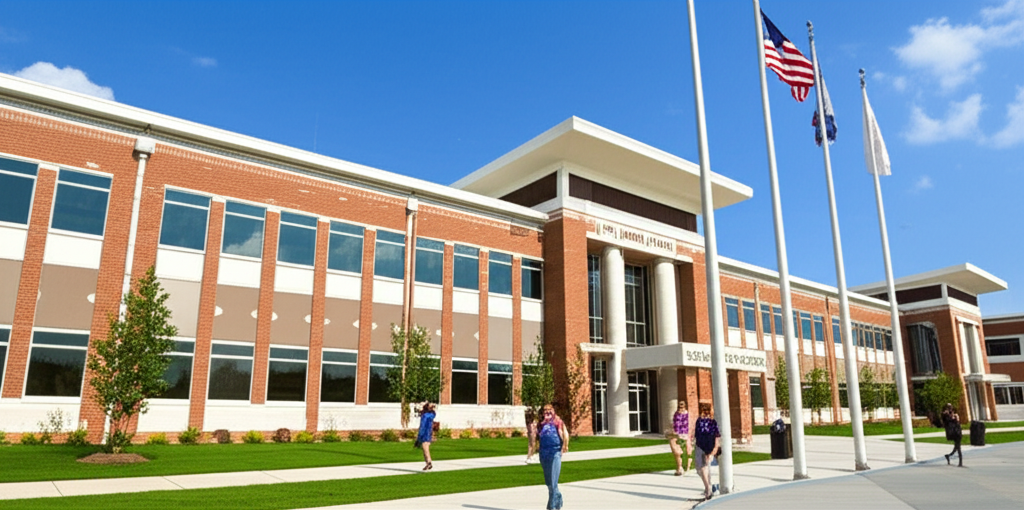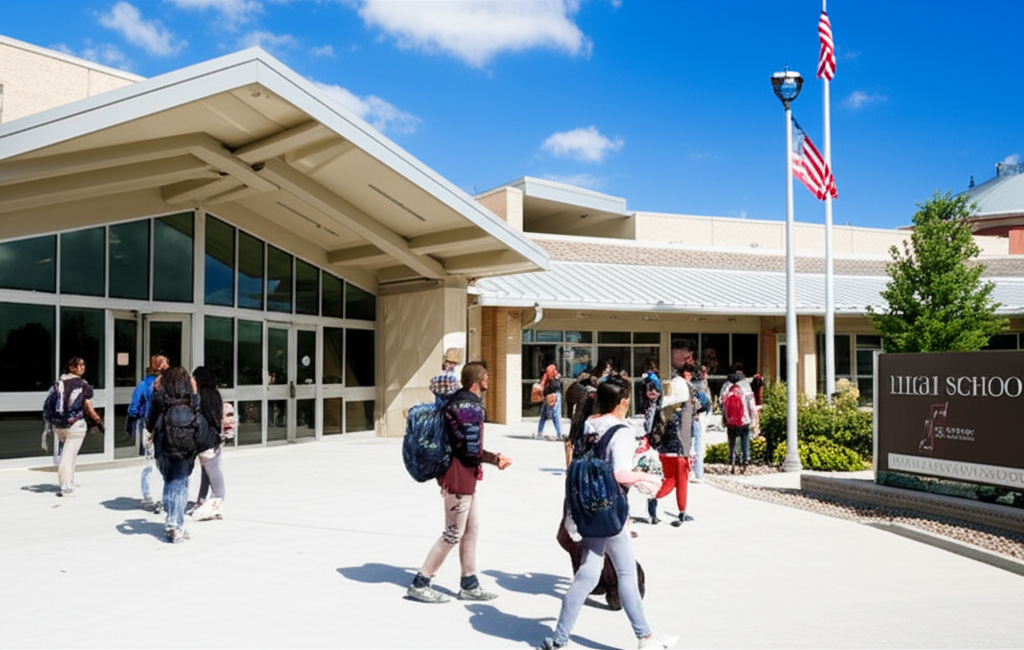Quick Summary: Discover the largest Wisconsin high schools by enrollment, offering a clear look at student populations to help you make informed decisions about educational opportunities in the state.
Navigating the vast landscape of Wisconsin high schools can feel overwhelming, especially when trying to understand the sheer scale of student bodies. Many parents and students find it challenging to pinpoint which schools are the largest, which can be a crucial factor in choosing the right educational environment. This guide simplifies that process, breaking down the enrollment numbers for Wisconsin’s high schools. We’ll explore what these numbers mean for your educational journey and provide clear insights to help you make the best choice.
Understanding Wisconsin High Schools by Enrollment
When we talk about “Wisconsin high schools by enrollment,” we’re looking at the total number of students attending a specific high school within the state. This metric is important for several reasons. Larger schools often have a wider array of academic programs, extracurricular activities, and specialized courses. They might also have more resources dedicated to various departments, from arts and music to STEM fields. However, smaller schools can offer more personalized attention and a tighter-knit community feel. Understanding enrollment figures helps you gauge the potential environment, opportunities, and even the social dynamics you might encounter at a particular institution.
The Wisconsin Department of Public Instruction (DPI) is the primary source for this kind of data. They collect and publish comprehensive statistics on all public schools in the state, including enrollment numbers, student demographics, and academic performance. This information is vital for parents, students, educators, and policymakers alike. It allows for comparisons, helps identify trends, and informs decisions about resource allocation and educational planning across the state.
Why Enrollment Numbers Matter for Students and Families
For students, the size of a high school can influence everything from class sizes and the availability of specific clubs to the level of competition in sports and the diversity of the student body. A larger school might mean more choices but also potentially larger classes and less individual attention from teachers. Conversely, a smaller school might offer a more intimate setting where students are more likely to be recognized and have closer relationships with faculty and peers, but might have fewer specialized electives or extracurricular options.
Families often consider enrollment as part of a broader decision-making process. They might be looking for schools that excel in certain areas, have strong college preparatory programs, or offer specific vocational training. Enrollment figures, when viewed alongside other factors like graduation rates, test scores, and available programs, provide a more complete picture of what a school can offer. It’s about finding the best fit for a student’s individual needs, learning style, and aspirations.
Top Wisconsin High Schools by Enrollment: A Closer Look
Pinpointing the absolute “top” schools by enrollment requires a clear dataset. The following information is based on recent available data from the Wisconsin Department of Public Instruction, offering a glimpse into the largest student populations in Wisconsin’s public high schools. It’s important to note that enrollment figures can fluctuate annually, but these provide a strong indication of the largest institutions.
Here are some of the Wisconsin high schools that consistently rank among the largest in terms of student enrollment. These figures represent the total student body, typically grades 9 through 12, though some schools may have slightly different grade configurations.
| High School Name | District | Approximate Enrollment |
|---|---|---|
| Kenosha Bradford High School | Kenosha Unified School District | 2,200+ |
| Milwaukee Vincent High School | Milwaukee School District | 2,100+ |
| Madison Memorial High School | Madison Metropolitan School District | 2,000+ |
| Waukesha South High School | Waukesha School District | 1,900+ |
| Appleton North High School | Appleton Area School District | 1,800+ |
| Franklin High School | Franklin Public School District | 1,700+ |
| Green Bay East High School | Green Bay Area School District | 1,700+ |
| Oak Creek High School | Oak Creek-Franklin Joint School District | 1,600+ |
| West Allis Central High School | Waukesha School District | 1,600+ |
| Neenah High School | Neenah Joint School District | 1,500+ |
Note: These figures are approximate and based on commonly reported data. For the most current and precise enrollment numbers, it is always best to consult the official Wisconsin Department of Public Instruction (DPI) website or the specific school district’s data. You can find official data through the DPI’s School Report Cards.
Factors Influencing School Size
Several factors contribute to why certain Wisconsin high schools have larger enrollments than others. Geographic location plays a significant role; schools in densely populated urban or suburban areas tend to draw more students than those in rural settings. School district boundaries are also critical. Larger districts, encompassing multiple communities, will naturally have schools with higher enrollment capacities. Furthermore, the reputation of a school, its academic offerings, and the availability of specialized programs can attract students from a wider area, potentially increasing enrollment, sometimes through open enrollment policies.
The historical development of communities also impacts school size. As suburban areas grew in the latter half of the 20th century, so did their school systems. Schools built to serve these growing populations often became some of the largest in the state. Conversely, many rural schools have seen declining enrollments as populations shift, leading to consolidation or smaller school sizes.
Navigating Your High School Choice

Choosing a high school is a significant decision, and enrollment is just one piece of the puzzle. It’s essential to look beyond the raw numbers and consider what a school’s size means in practice for your student. Here’s a breakdown of how to approach this:
Pros and Cons of Large High Schools
Large high schools can offer a wealth of opportunities. Here are some common advantages:
- Diverse Course Offerings: Typically feature a wider range of Advanced Placement (AP) classes, electives, foreign languages, and specialized career and technical education (CTE) programs.
- Extensive Extracurricular Activities: Often boast numerous clubs, sports teams (varsity, junior varsity, club), arts programs, and other organizations, catering to a broader spectrum of student interests.
- Specialized Facilities and Resources: May have state-of-the-art science labs, extensive libraries, performing arts centers, athletic complexes, and dedicated technology resources.
- Greater Diversity: Can offer a more diverse student body in terms of socioeconomic background, ethnicity, and interests, providing exposure to a wider range of perspectives.
- More Networking Opportunities: A larger alumni network can provide more extensive future career and college networking possibilities.
However, there are also potential drawbacks to consider:
- Larger Class Sizes: Students might find themselves in classes with many peers, potentially leading to less individual attention from teachers.
- Less Personalized Attention: It can be harder for students to stand out or receive individualized support in a large, busy environment.
- Bureaucracy and Complexity: Navigating a large institution, from academic advising to extracurricular sign-ups, can sometimes feel more complex and impersonal.
- Potential for Feeling Lost: Some students may struggle to find their place or feel anonymous in a very large student body.
- Increased Competition: Competition for spots on teams, in clubs, or for leadership positions can be more intense.
Pros and Cons of Smaller High Schools
Smaller high schools often present a different set of advantages:
- Smaller Class Sizes: Lead to more direct interaction with teachers and peers, fostering a more collaborative learning environment.
- Personalized Attention: Teachers often have a better understanding of individual students’ strengths, weaknesses, and needs, providing more tailored support.
- Stronger Sense of Community: It can be easier to build close relationships with peers and faculty, leading to a more tight-knit and supportive school culture.
- Easier to Get Involved: Students may find it simpler to join clubs, participate in sports, or take on leadership roles due to less competition and more opportunities.
- More Focused Environment: Can be less distracting for students who thrive in a quieter, more directed setting.
On the other hand, smaller schools might have limitations:
- Fewer Course Offerings: May not have the same breadth of AP courses, electives, or specialized programs as larger schools.
- Limited Extracurricular Options: The number of clubs, sports, and arts programs might be restricted due to student interest or resource availability.
- Less Diversity: Student bodies may be less diverse in terms of background and interests compared to larger, urban schools.
- Fewer Resources: May have less access to advanced technology, specialized equipment, or extensive library collections.
- Fewer Networking Opportunities: The alumni base might be smaller, potentially offering fewer immediate networking avenues post-graduation.
How to Research Specific Wisconsin High Schools
Beyond enrollment numbers, a thorough research process is key to finding the right fit. Here’s a step-by-step approach:
- Start with the Wisconsin Department of Public Instruction (DPI): The DPI website (dpi.wi.gov) is an invaluable resource. Look for their “School Report Cards” section. These reports provide comprehensive data on every public school in Wisconsin, including student demographics, academic achievement, graduation rates, and school finance information. This is your go-to for official, reliable data.
- Visit School District Websites: Each school district in Wisconsin maintains its own website. These sites often contain detailed information about individual schools within the district, including their mission statements, available programs, course catalogs, extracurricular offerings, and staff directories.
- Explore School Websites Directly: Once you’ve identified potential schools, visit their individual websites. This is where you’ll find the most specific information about daily life at the school, including news, events, student handbooks, and departmental information.
- Attend Open Houses and Information Sessions: Many high schools host events for prospective students and their families. These are excellent opportunities to tour the campus, meet teachers and administrators, and ask questions.
- Talk to Current Students and Parents: If possible, seek out current students, parents, or alumni of the schools you are considering. Their firsthand experiences can offer insights that official reports don’t capture.
- Consider Academic Programs and Extracurriculars: Make a list of the academic subjects, specific courses (like AP, IB, or dual enrollment), and extracurricular activities (sports, arts, clubs, vocational programs) that are most important to your student. Then, investigate which schools offer these opportunities.
- Look at Graduation and Post-Secondary Success Rates: Data on graduation rates, college acceptance rates, and career readiness can indicate how well a school prepares its students for life after high school.
Utilizing Official Resources for Data
The Wisconsin DPI provides a wealth of information that can help you compare schools. Their School Report Cards are designed to be transparent and informative, allowing you to see how schools perform across various metrics. For example, you can often find data on student-teacher ratios, graduation rates, and achievement gaps. Understanding these metrics alongside enrollment can provide a more nuanced view of school quality and student experience.
For instance, a school with high enrollment might still have a low student-teacher ratio if it has a large number of teachers, or it might have a high ratio if it’s struggling with resources relative to its student population. This is the kind of detail that official reports can help uncover. You can access these reports and other data through the official Wisconsin Department of Public Instruction website.
Frequently Asked Questions About Wisconsin High Schools
Q1: How can I find the most current enrollment data for a specific Wisconsin high school?
A1: The best way to find the most current enrollment data is to visit the Wisconsin Department of Public Instruction (DPI) website and look for their School Report Cards. You can also check the specific school district’s website, as they often publish updated statistics.
Q2: Does a larger enrollment always mean a better school?
A2: Not necessarily. A larger enrollment can mean more opportunities, but it can also mean larger classes and less individual attention. The “best” school depends on your student’s individual needs and learning style. It’s important to consider enrollment alongside other factors like academic programs, school culture, and student support services.
Q3: Are there differences in resources between large and small Wisconsin high schools?
A3: Generally, larger schools in more populous areas may have access to more extensive resources, such as specialized labs, diverse athletic facilities, and a wider range of elective courses. However, smaller schools, especially those in well-funded districts, can also offer excellent resources and may provide more focused support.
Q4: How does open enrollment affect high school enrollment numbers in Wisconsin?
A4: Wisconsin’s open enrollment program allows students to attend public schools outside their district of residence. This can significantly impact enrollment numbers, sometimes leading to increased student populations in popular schools or districts and potentially affecting enrollment in schools within a student’s home district.
Q5: Where can I find information about private or charter high schools in Wisconsin?
A5: While this article focuses on public schools, information on private and charter schools can typically be found through their respective institutions or organizations that accredit or oversee them. The Wisconsin DPI may also have some information on charter schools.
Q6: What should I look for besides enrollment when evaluating a Wisconsin high school?
A6: Consider graduation rates, student-teacher ratios, academic achievement scores, the availability of Advanced Placement (AP) or dual enrollment courses, extracurricular activities, school safety statistics, and the overall school culture and student support systems.
Conclusion

Understanding “Wisconsin high schools by enrollment” is a valuable starting point when exploring educational options across the state. While schools with larger student bodies often boast a wider array of programs and activities, the “best” school is always the one that best fits your student’s individual needs, learning style, and aspirations. By leveraging resources like the Wisconsin Department of Public Instruction’s School Report Cards, district websites, and by visiting schools directly, you can gather the comprehensive information needed to make an informed decision. Remember to look beyond the numbers, consider the pros and cons of different school sizes, and ultimately, find a supportive environment where your student can thrive academically and personally.

